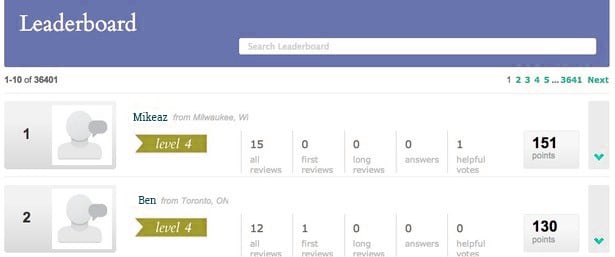We know you have seen the trend reports and forecasts for 2016 and beyond. Some of those ideas seem right to you, you can see the change happening already. But some seem a tad bit fanciful, making you scoff. Things like “gamification,” applying game elements to your E-commerce store! Why do you have to turn into a game shop to boost sales?
Well, you are in the right place. We will be telling you the ‘Why’ and showing you the ‘How’.
E-commerce Gamification: Why?
Gamification, as the name implies, is the application of game thinking and game mechanics, like challenges and rewards, to non-game contexts to affect behavior. It is all about using people’s desire for competition, status and achievement to drive desired behavior.
But why does everything have to be a ‘Game’?
Because, games are addictive! They can push people to linger on your site/app for longer.
You can see changes in metrics like:
- Time on site/App
- Customer retention rate
- Lifetime value of Customer
- Average spend per customer
- Purchase Frequency
- Churn Rate
- Net Promoter Score
- Customer Profitability Score
Besides boosting sales and customer loyalty, you will build an army of loyal promoters for your brand. Savvy retailers are already pushing brand awareness and lowering cost of new customer acquisition by leveraging user-generated content (UGC). Loyalty programs and rewards are being designed to encourage repeat sales, reviews, referrals, and social shares.
E-Commerce Gamification: How?
Before we begin, remember the key elements of gamification include challenges, progress/ status bars, competition (leaderboards, etc.), rewards, and of course fun. So how to play the “Gamification” game?
- Identify your Key Business Objectives (KBOs).
- More Purchases
- Asking & Answering Questions
- Writing Honest Reviews
- Participating in polls
- Social Shares
- Referrals
- User-Generated Content (Product images/videos)
- Identify game elements which can drive your KBOs.
- Add game elements to your site/app
- Track metrics to analyze impact
- Use data to increase in-game engagement
E-Commerce Gamification: Examples
Here are 5 brilliant examples of E-commerce gamification that can get you up to speed on how the experts are playing it.
1) Starbucks – MY REWARDS PROGRAM
WHAT: A creative customer loyalty program that boosts repeat sales by rewarding every purchase.
IMPACT: Record second-quarter results including a 26% rise in profit and an 11% jump in total revenue, to $3.6 billion. The Program also led to an increase in mobile app usage and mobile payment transactions for the company.
THE GAME: Every time customers purchase a Starbucks product they win stars; these can be redeemed on future purchases. Additionally, based on the degree of user loyalty (frequency of visits), users are upgraded to higher levels. Benefits range from an extra coffee, a birthday gift to personalized offers.
2) Teleflora – POWERREVIEW SOCIAL LOYALTY SCHEME
WHAT: The US based Florist has a social loyalty scheme which aims to build social engagement and UGC.
IMPACT: The PowerReview scheme was a stupendous success. Referral traffic from Facebook increased by 105%. A 10-fold increase in UGC (pictures and videos) was also observed after the loyalty scheme was introduced. And more importantly, the conversion rate improved by 92%.
THE GAME: Teleflora inspires social loyalty by awarding points to customers who post user reviews, answer product queries, post comments and engage in meaningful conversations around the brand on social media. The program also has status levels assigned to customers who earn more points. They even have a leaderboard showing top performers.
3) Step2 – ‘BUZZBOARD’ SOCIAL LOYALTY PROGRAM
WHAT: Children’s retailer Step2 has introduced a very effective social loyalty program it calls ‘Buzzboard’. It rewards members based on the amount of buzz created around their brand.
IMPACT: Step2 could clock a 135% rise in referral traffic from Facebook. UGC in the form of use uploaded images and videos also rose by a phenomenal 600%.
THE GAME: The BuzzBoard loyalty program rewards it members for posting UGC and for shares and reviews. The program is generous in awarding points to members, with customers sharing content getting big rewards. It also gives status upgrades through creatively titled badges like “New Bee”, “Queen Bee” etc.
4) Nike – ‘WINTER’S ANGRY. FIGHT BACK’ MINI-GAMES
WHAT: In 2011 Nike drove sales of its winter clothing range through an innovative campaign that featured three mini-games. The games weren’t just for fun, but were meant to raise awareness of Nike’s new product range.
IMPACT: The campaign had a tremendous impact and clocked over 2,100,000 visitors. The game was greatly successful at popularizing Nike’s new winter gear amongst the target market.
THE GAME: The games had players compete to win the grand prize of meeting top athletes. The game wanted to go beyond showcasing the new gear to highlighting its real-world functionality. It let players get a feel of the winter gear by letting them control its use in a live-action online game. The players could share their scores socially and could also compete for top spots on a leaderboard.
5) Sneakpeeq.com – SALES GAMIFICATION PROGRAM
WHAT: Sneakpeeq, the social shopping startup was finding it hard to compete with other e-tailers offering daily deals. They used game mechanics to increase sales and for new customer acquisition.
IMPACT: Sneakpeeq saw their conversion rate increase by 18%. A 935% boost in loves and 590% increase in social shares also followed the introduction of game elements.
THE GAME: The game makes three primary actions available to Sneakpeeq users: Share, Peeq and Love. Peeq involves the customer checking the product’s retail price and special discount price. Love lets users display their favorite products on their profiles. Apart from usual game elements like points, badges, and leaderboards, Sneakpeeq added mystery by scattering surprise badges over the site. The surprise badges have been very effective in encouraging users to visit more number of pages. Sneakpeeq’s mystery elements like surprise badges and mystery boxes have been very successful in boosting sales and increasing customer engagement and loyalty.
Are you all set to play? Choose your game wisely and get a gamification suite to kick off!
Recent Blogs
Enhancing Shipping Precision with Custom Shipping Groups in Adobe Commerce/ Magento
Enhancing Shipping Precision with Custom Shipping Groups in Adobe Commerce/ Magento Author Category Share Three things matter the most when it comes to eCommerce shipping: speed, accuracy,...
Managing Massive Product Catalogs: Why Synchronization is the Key to Efficiency
Managing Massive Product Catalogs: Why Synchronization is the Key to Efficiency Author Category Share The automotive aftermarket industry is vast and highly competitive, requiring businesses...
A Complete Guide to Seamlessly Integrating Adobe Commerce with NetSuite
A Complete Guide to Seamlessly Integrating Adobe Commerce with NetSuite Author Category Share Integrating Adobe Commerce (formerly Magento) with NetSuite ERP can transform the way businesses...







